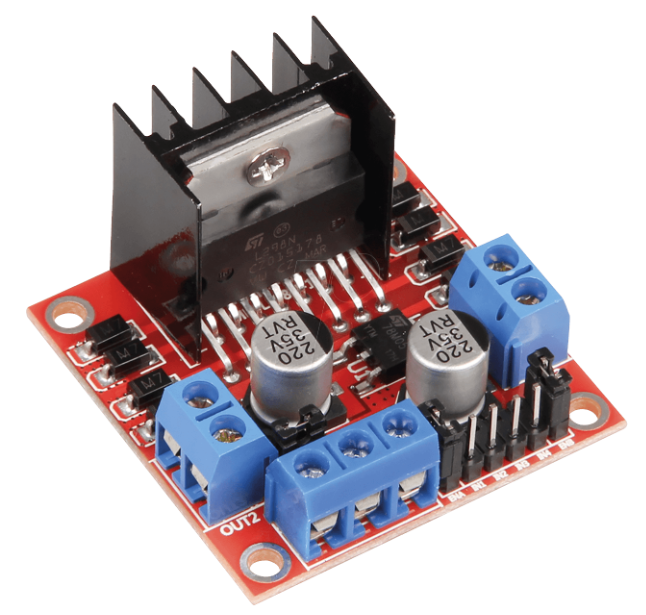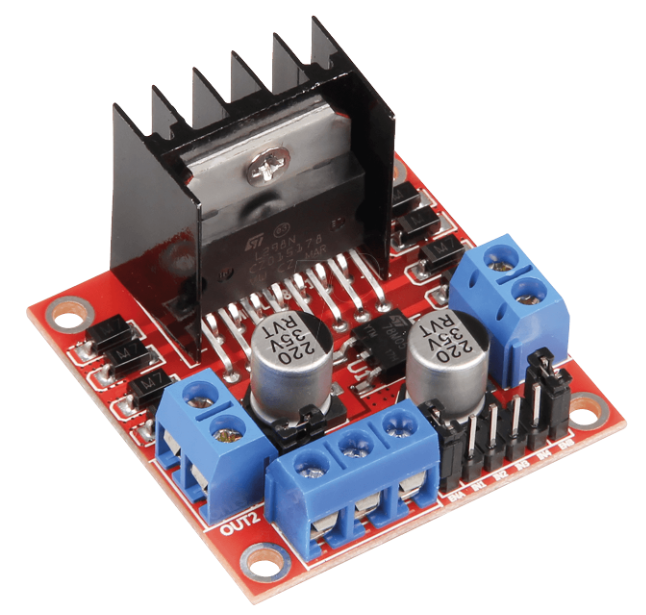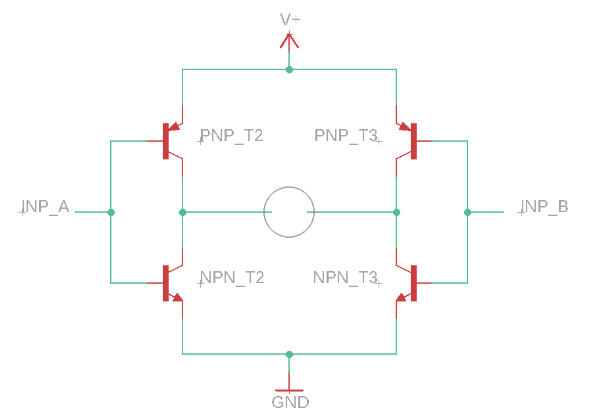This article focuses on the L298N dual H-bridge driver IC, highlighting its specs and common applications.
The L298N is a dual H-Bridge driver IC that is a powerful, easy-to-use, and cost-effective solution for makers.
Most hobbyists will probably never use the IC on its own, opting instead for one of the various premade modules that utilize the chip. This article will go over the basic features and specs of these modules and will explain how you can quickly get started using any L298N-based H-Bridge module.
About the L298N
If you want to control a relatively high power device, you won’t be able to supply enough current from a simple microcontroller. You’ll need a device that can be switched on and off to control the high power load. Additionally, you’ll most likely want a motor to spin in both directions. An H-Bridge is one way to easily control a motor with a low-power microcontroller.
You can find L298N-based modules connected to low-power microcontrollers in many different projects. For example, robots, electronic tools, home automation applications (like automatic blinds) and in cheap, high-power LED drivers.
As mentioned above, you can either get the IC or you can buy a premade module. Both are readily available. The IC itself is manufactured by STMicroelectronics and the modules can be bought from many different online suppliers.
Important Specs
The dimensions refer to the most common module. Almost all of them look like the one in the picture above. However, make sure to double-check your specific manufacturer’s datasheet!
- Length: 43 mm (1 ¾ in)
- Width: 43 mm (1 ¾ in)
- Height: 26 mm (1 in)
- Typical price: Around 4$ (IC) and around 7$ (complete module)
- Supply voltage: 5V (All modules will work safely with 5V. However, most modules have a built-in step-down converter and can be used with voltages up to 35V)
- Operating voltage: 5V (All logic pins)
- Working current: 0.35mA
- Motor Voltage: 5V to 35V
- Motor current: 2A per H-Bridge
- Maximum Power: 25W
How Does H-Bridge Work?
This is a dual H-Bridge controller, which means it can control up to two motors simultaneously. Each motor has its respective positive and negative terminal to which it has to be connected. These are usually labeled OUT_1 and OUT_2.
The direction of each motor can individually be controlled with two input pins:
The H-Bridge circuit diagram.
When both, INP_A and INP_B, are low, the motor is off. If either of the pins is HIGH while the other one is LOW, the motor will spin in one direction. To reverse the motor, reverse the states of the inputs. If both pins are pulled high, the motor will stop again.
Note, that depending on the motor you use, the IC will get really hot and you’ll most certainly need to use it with a heat sink to avoid damaging your build.
Datasheets
There are a few different datasheets available on the internet. However, I found these to be the most useful ones:
Tutorials and Projects That Use This Module
Final Thoughts
The L298N based dual H-Bridge driver modules are probably the most common ones amongst makers and can drive motors with a power consumption of up to 25 W. They are very versatile, cheap and easy to use with the most common platforms, like the Arduino boards and the Raspberry Pi.





